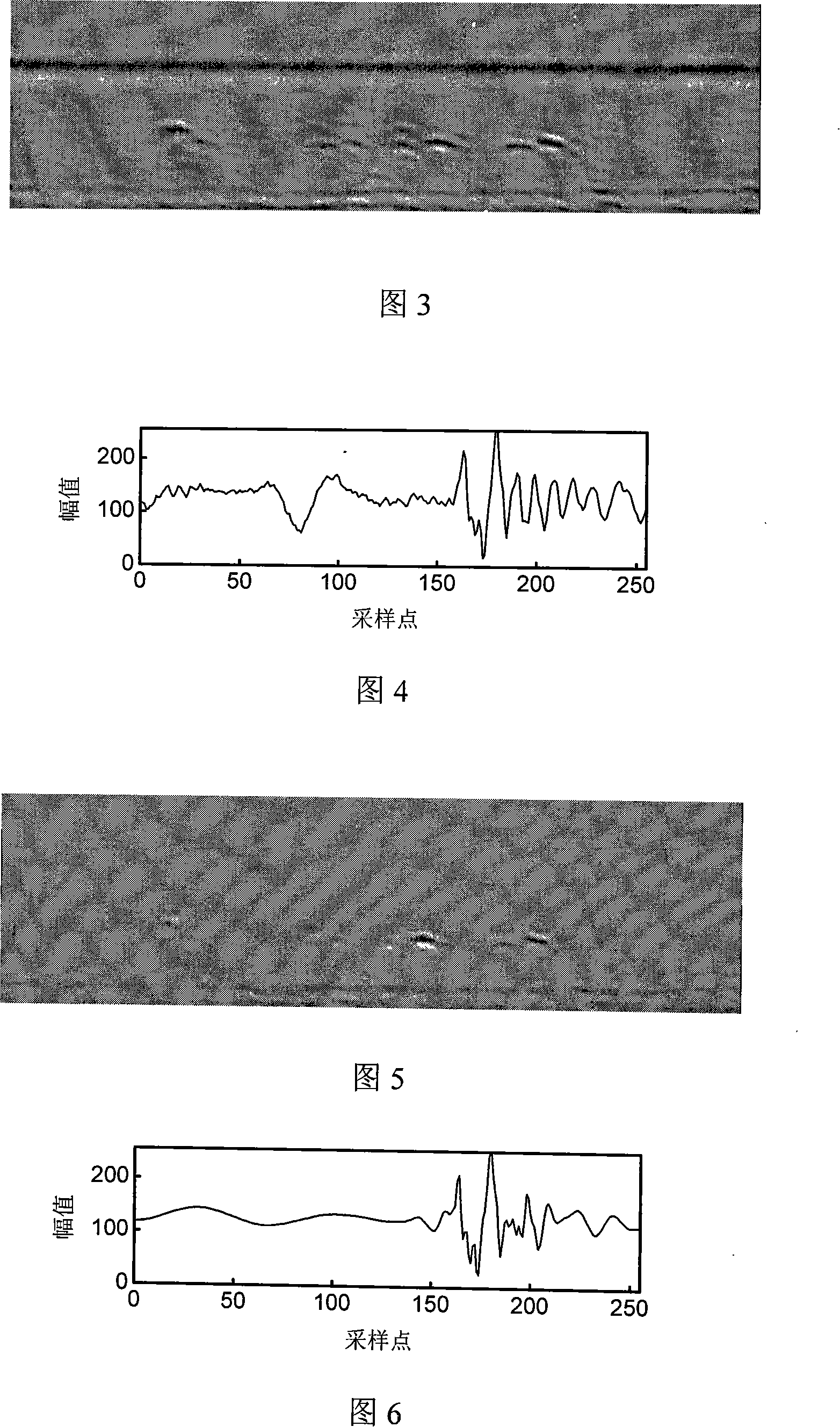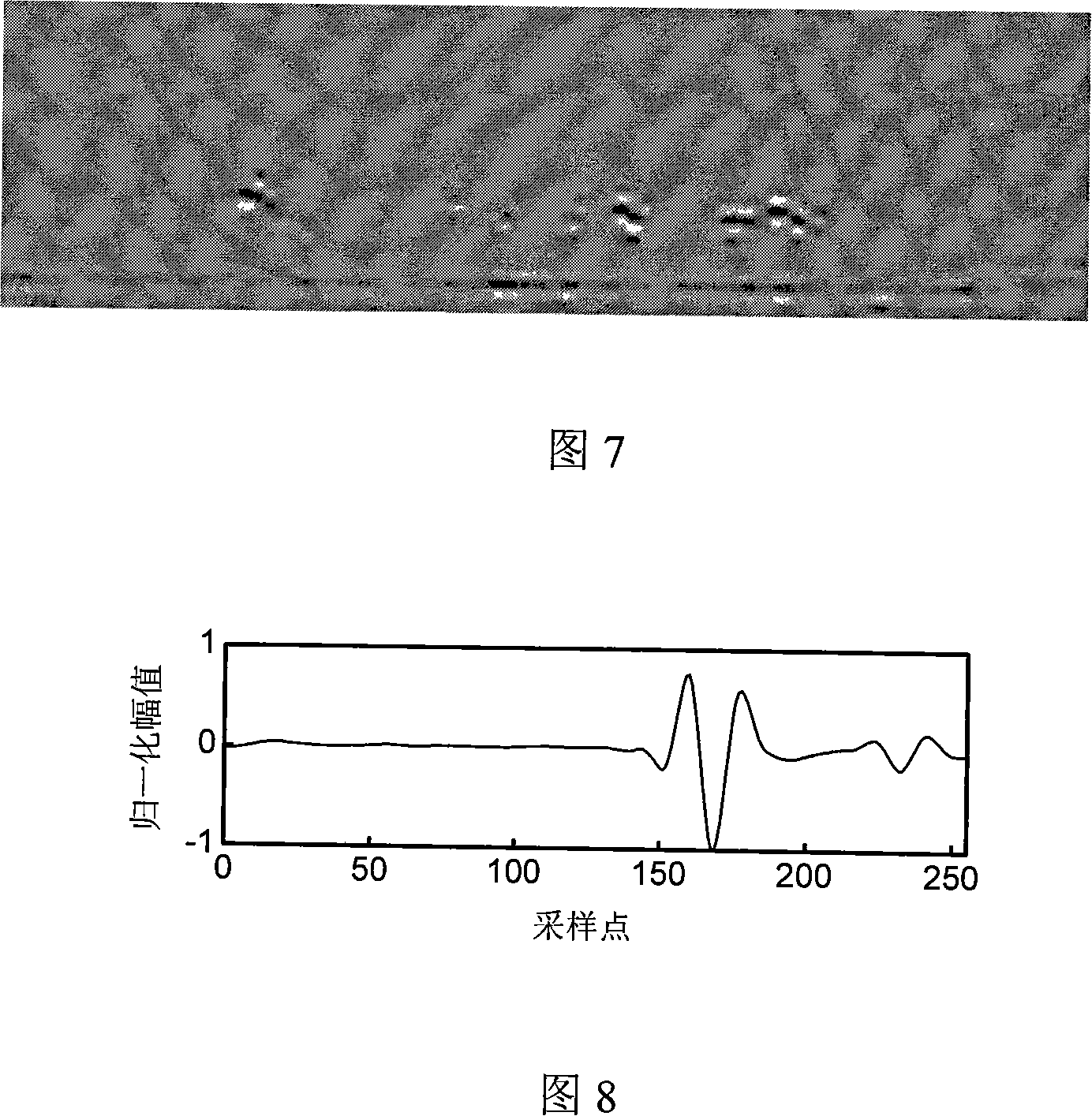Method for restraining complicated ingredient noise in ultrasound detection signal
An ultrasonic detection and signal technology, applied in the direction of processing the response signal of detection, can solve the problems of poor signal noise suppression effect and complex component noise, and achieve good noise suppression effect, more robustness, and strong adaptability.
- Summary
- Abstract
- Description
- Claims
- Application Information
AI Technical Summary
Problems solved by technology
Method used
Image
Examples
specific Embodiment approach 1
[0022] Specific implementation mode one: this implementation mode is completed by the following steps:
[0023] Step 1: Obtain a detection D-scan image; remove the lateral wave in the detection D-scan image;
[0024] Step 2: Select the mother wavelet and determine the level of decomposition, perform wavelet decomposition of the one-dimensional signal on the A-scan signal in the D-scan image obtained in step 1, and obtain detail wavelets and approximation wavelets at all levels after decomposition;
[0025] Step 3: Select the same mother wavelet and decomposition level as in the previous step for the adjacent signal of the A-scan signal to be processed in the previous step, perform wavelet decomposition of the one-dimensional signal, and obtain detail wavelets and approximations at all levels after decomposition wavelet;
[0026] Step 4: Perform cumulative multiplication operations on the decomposed detail wavelets of the A-scan signal to be processed and its adjacent signals ...
specific Embodiment approach 2
[0033] Specific implementation mode two: the following specific description of this implementation mode, this implementation mode takes the aluminum alloy weld seam as the detection object:
[0034] Step 1: Arrange the probes on the aluminum alloy weld seam of the thick plate to be tested as shown in Figure 1, and the distance between the two probes is 50mm. The system gain is 68dB, the sampling frequency is 100MHz, the system scanning length is 180mm, and the scanning step is 0.2mm. A total of 900 columns of A-scan signals were obtained, and arranged in sequence to form a D-scan digital image, as shown in Figure 3, corresponding to the 214th column of A-scan signals as shown in Figure 4, and the size of the digital matrix is 256×900; adaptive filtering technology is used to detect D-scan The lateral wave in the scanned image is removed;
[0035] Step 2: Perform noise suppression processing one by one on the A-scan signals in the D-scan images after the side waves have been...
PUM
 Login to View More
Login to View More Abstract
Description
Claims
Application Information
 Login to View More
Login to View More - R&D
- Intellectual Property
- Life Sciences
- Materials
- Tech Scout
- Unparalleled Data Quality
- Higher Quality Content
- 60% Fewer Hallucinations
Browse by: Latest US Patents, China's latest patents, Technical Efficacy Thesaurus, Application Domain, Technology Topic, Popular Technical Reports.
© 2025 PatSnap. All rights reserved.Legal|Privacy policy|Modern Slavery Act Transparency Statement|Sitemap|About US| Contact US: help@patsnap.com



